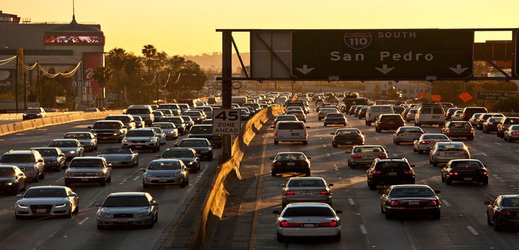Fury at US environmental agency’s effort to weaken fuel standards

The US Environmental Protection Agency (EPA) has released a long-awaited proposal to weaken federal fuel-efficiency standards for passenger vehicles and strip California of its ability to set its own, stricter limits on vehicle greenhouse-gas emissions. The proposal, formally announced on 2 August, has incensed scientists, environmentalists and officials in California. They have vowed to fight the plan, raising the spectre of a legal battle that could end up in the Supreme Court.
President Donald Trump's administration argues that meeting the current fuel-efficiency standards is too costly for carmakers and will drive up vehicle prices. The government says that would ultimately increase the number of deaths from traffic accidents by encouraging consumers to keep driving older, less-safe vehicles. Scientists say that those claims are baseless.
“I don’t believe the administration has any solid engineering or economic ground to stand on,” says John DeCicco, an engineer who studies the energy and environmental impact of vehicles at the University of Michigan in Ann Arbor. “It is basically political opportunism.”
The government's proposal would weaken regulations enacted under former president Barack Obama . The Trump administration plan lays out several options for altering the Obama-era rules, but its preferred course of action would freeze standards for all vehicle types and sizes after 2020. Under this scenario, projected carbon dioxide emissions from new US vehicles would increase by roughly 20% compared to the project output under the current regulations — an estimated 23 kilometres per litre — by 2025.
The Trump plan would also revoke a waiver granted to California under the Clean Air Act that allows the state to set air-quality standards that are stricter than those enacted by the federal government. The waiver also lets other states to adopt California's standards.
The Trump administration is creating a legal quagmire, says Irene Gutierrez, an attorney with the Natural Resources Defense Council, an advocacy group based in New York City. “If their goal is to create a landscape where industry has regulatory certainty, they are not going to achieve that goal.”
Setting standards
The EPA and the National Highway Traffic Safety Administration adopted the current vehicle-emissions standards in 2012, setting annual targets for both greenhouse gases and fuel efficiency. California adopted similar standards in parallel, creating a single set of targets for all vehicles manufactured in the United States. The EPA — which regulates vehicle greenhouse-gas emissions — then reversed course in April 2018, citing the cost to consumers and carmakers, public safety concerns and the inflexibility of the regulations.
The technology exists to meet these standards, DeCicco says, and there's no solid evidence that the regulations come at a cost to public health. Moreover, he adds, the kind of regulatory flexibility that the administration says it wants is built into the existing rules.
The current standards set individual requirements for vehicles of different types and sizes, rather than a single target as in past emissions regulations. This means that projected average fuel-efficiency standards automatically adjust to changes in the mix of cars and trucks on the road. DeCicco notes that government projections for the average fuel efficiency of new vehicles in 2025 have already dropped by 15% from the original average of 23 kilometres per litre owing to a changing mix of vehicles since 2012.
Exemption waiver
California’s Clean Air Act waiver allows it maintain its own standards as long as the state demonstrates that it has “compelling and extraordinary" circumstances to do so. Thirteen states and the District of Columbia have adopted its fuel-efficiency standards.
The EPA is seeking comments on whether to revoke California’s waiver. If the agency decides to move forward with that plan, it will need to go through a formal rule-making process and then prevail in court against challenges that California and environmental groups will certainly file. That process could take years.
One of the key legal questions facing the courts would be whether California could show that it has unique problems that justify its ability to set environmental regulations independently of the federal government. Gutierrez says that the state would have a solid case: it is already experiencing the effects of global warming, including extreme droughts and explosive wildfires.
Others say it’s unclear whether those arguments will fly in court. “When it comes to climate change, California is no different than any other state,” says Jeffrey Holmstead, a lawyer at Bracewell in Washington DC, who worked at the EPA under former president George W. Bush.
The fuel-efficiency proposal will now undergo a 60-day public-comment period. But carmakers are pushing for the Trump administration to work out a deal that would retain a unified emissions standard with California, says Holmstead. This would head off the regulatory uncertainty that would accompany a protracted court battle.
